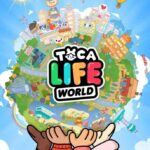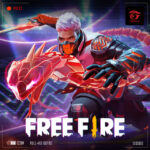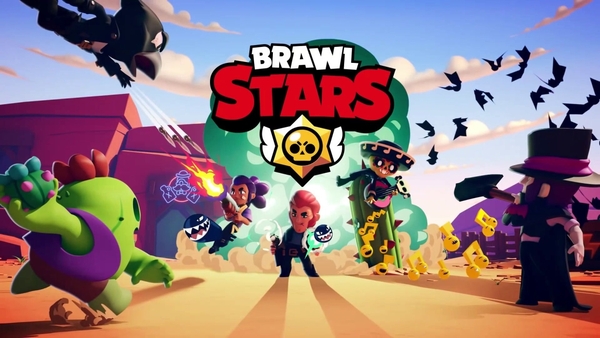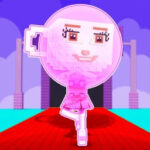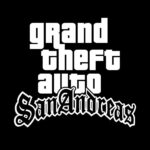
Brawl Stars
All trademarks belong to their respective owners.
Advertisement
Popular Now
Brawl Stars, developed by Supercell, is a dynamic, competitive multiplayer game that has attracted millions of players worldwide. In the game, players battle with a variety of unique characters known as Brawlers, each possessing distinct abilities and playstyles. Over time, as new Brawlers are introduced and gameplay evolves, certain Brawlers often become stronger or weaker than others. This phenomenon, known as Power Creep, is a growing issue that can significantly affect the game’s balance and fairness. Power Creep occurs when newer characters or updates make older characters less viable, often leading to frustration among players who invested time in mastering those older Brawlers. In this article, we will explore how Power Creep has affected Brawl Stars, its implications for the game's competitive balance, and what can be done to address this issue.
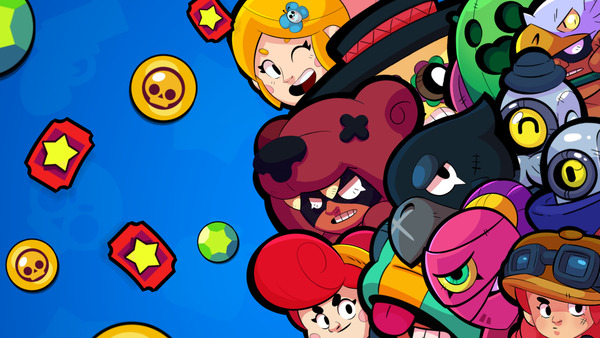 When Power Creep occurs, players are incentivized to focus on new Brawlers because they have higher potential damage, better supers, or more survivability[/caption]
When Power Creep occurs, players are incentivized to focus on new Brawlers because they have higher potential damage, better supers, or more survivability[/caption]
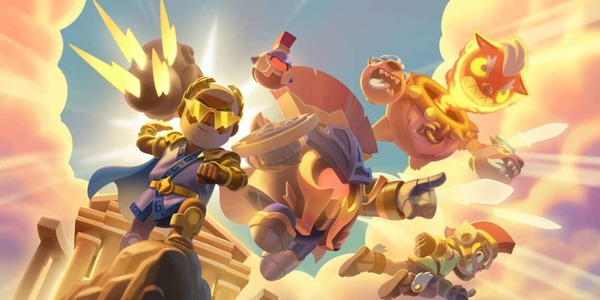 Tournaments and esports scenes rely on balance and fair competition, and Power Creep can skew results by making certain Brawlers almost mandatory picks[/caption]
Tournaments and esports scenes rely on balance and fair competition, and Power Creep can skew results by making certain Brawlers almost mandatory picks[/caption]
 One potential solution is for Supercell to periodically buff older Brawlers in such a way that they remain competitive with newer releases[/caption]
One potential solution is for Supercell to periodically buff older Brawlers in such a way that they remain competitive with newer releases[/caption]
What Is Power Creep in Brawl Stars?
Power Creep refers to the gradual increase in the power of newer Brawlers, typically by giving them stronger stats, abilities, or supers compared to older Brawlers. This can make older Brawlers feel obsolete or underpowered in comparison, pushing players to focus more on newer characters to remain competitive.The Origins of Power Creep
Power Creep isn't unique to Brawl Stars; it’s a common issue in many online multiplayer games that feature constant updates and new content. In Brawl Stars, as Supercell introduces new Brawlers, they often aim to make them exciting and attractive by giving them powerful abilities or unique mechanics. While this helps maintain player interest, it can unintentionally unbalance the game if the new Brawlers outperform older ones, creating a disparity in power.How Power Creep Affects Gameplay
When Power Creep occurs, players are incentivized to focus on new Brawlers because they have higher potential damage, better supers, or more survivability. This creates a meta where older Brawlers are neglected or underperform, leading to frustration among players who may prefer those characters or have already invested time and resources into them. It also makes the game feel unfair and less fun, especially for players who don't want to constantly grind for new Brawlers to stay competitive. [caption id="attachment_1652" align="aligncenter" width="600"] When Power Creep occurs, players are incentivized to focus on new Brawlers because they have higher potential damage, better supers, or more survivability[/caption]
When Power Creep occurs, players are incentivized to focus on new Brawlers because they have higher potential damage, better supers, or more survivability[/caption]
The Role of New Brawler Releases
One of the primary drivers of Power Creep in Brawl Stars is the frequent release of new Brawlers. Each new character often comes with unique abilities and supers that can make them incredibly powerful, especially when they are first introduced.Initial Overpowered Brawlers
When a new Brawler is released, Supercell often designs them to be intriguing and powerful to attract players’ attention. This makes them seem "overpowered" in the short term, as they tend to have better stats and more interesting mechanics compared to existing Brawlers. These Brawlers are often favored in the meta, which further accelerates the Power Creep cycle.- Example: Brawlers like Mandy and Grom were introduced with unique mechanics that made them powerful. Mandy, for instance, can hit enemies from great distances with her charged attack, making her a devastating force in certain modes.
- Example: Grom was another Brawler with high damage and an area-of-effect super that could wipe out groups of enemies, making him extremely useful right out of the gate.
The First Impressions Are Key
Supercell’s approach of launching new Brawlers with eye-catching abilities works from a marketing standpoint. However, this can create an imbalanced environment where new Brawlers dominate the game for a period of time. Players want to experience the excitement of new characters, but the meta can quickly shift to a state where older Brawlers are less viable or forgotten.The Meta Shift: How Power Creep Changes the Game
The introduction of stronger Brawlers leads to shifts in the game’s meta, or the most effective strategies and character choices. Power Creep plays a large role in these shifts, and it significantly impacts how players approach different game modes.Short-Term Power Creep and Meta Instability
When a new Brawler is released and outperforms older Brawlers, the game's meta shifts. In the short term, these new Brawlers dominate, and players gravitate toward them to stay competitive. This creates a period of meta instability, where the balance of the game is in flux. It’s not uncommon for players to see the same new Brawlers in almost every match, while older characters struggle to find relevance.- Example: After the release of Rico and Grom, their powerful range and area-of-effect abilities made them staples in competitive matches. This left older Brawlers like Bo and Poco feeling less effective in comparison, which led to a lack of variety in gameplay.
Long-Term Power Creep: Diminishing the Fun of Old Brawlers
Over time, as more Brawlers are released and stronger abilities are added, the gap between old and new characters becomes wider. In the long run, this makes older Brawlers feel irrelevant or weak. Players who have invested time and resources in leveling up and upgrading older characters may feel disappointed that their hard work doesn’t translate into competitive success. This diminishes the joy of playing with certain Brawlers, especially for those who prefer older characters or specific playstyles.- Example: Penny and Carl, while once dominant in their respective roles, began to lose their edge against newer, stronger Brawlers. As a result, players gravitated towards the newer Brawlers, leaving these older ones largely forgotten in the meta.
Supercell’s Efforts to Address Power Creep
Recognizing the negative effects of Power Creep, Supercell has attempted to address this issue by tweaking Brawlers' balance through regular updates, nerfs, and buffs.Nerfs: Bringing Strong Brawlers Down to Earth
When a Brawler becomes too strong, Supercell often nerfs their abilities or stats to bring them back into balance. For instance, if a newly released Brawler is dominating the game too much, Supercell may reduce their damage, range, or survivability.- Example: Mandy, after being considered overpowered, received several nerfs to her damage output and range, reducing her effectiveness in certain situations.
- Example: Rico also went through multiple balance changes to limit his range and damage in order to bring him back in line with other Brawlers.
Buffs: Giving Older Brawlers a Boost
To counteract Power Creep and make older Brawlers more viable again, Supercell frequently buffs underperforming characters. By improving a Brawler’s abilities or increasing their damage, Supercell ensures that older Brawlers can still be competitive in the meta.- Example: Brawlers like Bo and Poco have received buffs over time, improving their effectiveness and allowing them to fit better into the game’s evolving meta.
The Impact on Competitive Play
In competitive play, Power Creep has a more pronounced impact. Tournaments and esports scenes rely on balance and fair competition, and Power Creep can skew results by making certain Brawlers almost mandatory picks. [caption id="attachment_1653" align="aligncenter" width="600"] Tournaments and esports scenes rely on balance and fair competition, and Power Creep can skew results by making certain Brawlers almost mandatory picks[/caption]
Tournaments and esports scenes rely on balance and fair competition, and Power Creep can skew results by making certain Brawlers almost mandatory picks[/caption]
The Pressure to Adapt Quickly
In the competitive scene, players and teams must adapt to the evolving meta as quickly as possible to stay ahead. This often means abandoning old strategies or characters in favor of the newest, most powerful Brawlers. This results in a lack of diversity in competitive matches, with only a handful of Brawlers being used consistently across tournaments.- Example: In major Brawl Stars tournaments, Mandy, Grom, and Rico became go-to picks for many teams, with other Brawlers being sidelined because they were less effective.
The Challenge of Creating a Balanced Esports Scene
For Supercell, maintaining a healthy and balanced competitive scene is crucial. Power Creep makes it difficult for players to keep up, as constant nerfs and buffs lead to a constantly shifting landscape. Balancing the game for casual and competitive players alike is a challenging task, especially when trying to make sure that all Brawlers are viable and fun to play.How Power Creep Affects Player Engagement
Power Creep can have a significant impact on how players engage with Brawl Stars over time. Players who have invested heavily in certain Brawlers may feel disheartened when those characters become less effective or enjoyable.Frustration and FOMO (Fear of Missing Out)
Players who enjoy using older Brawlers may feel left behind as new Brawlers gain more prominence. This can lead to frustration, especially if they feel that their progression and investments are no longer valuable. Additionally, there is the fear of missing out (FOMO) when new Brawlers become overpowered, as players feel the pressure to grind for these new characters to stay competitive.Increased Spending on Brawl Pass and Boxes
In response to Power Creep, some players may feel the need to invest more in Brawl Boxes or the Brawl Pass to unlock and upgrade newer Brawlers. This creates a cycle where players feel compelled to spend money to keep up with the game’s constant evolution.Possible Solutions to Mitigate Power Creep
While Power Creep is a challenging issue, there are a few potential solutions that could help address it and ensure Brawl Stars remains balanced and enjoyable for all players.Buffing Older Brawlers and Adjusting Stats
One potential solution is for Supercell to periodically buff older Brawlers in such a way that they remain competitive with newer releases. This could involve adjusting their stats or supers to give them a more viable presence in the current meta. [caption id="attachment_1654" align="aligncenter" width="600"] One potential solution is for Supercell to periodically buff older Brawlers in such a way that they remain competitive with newer releases[/caption]
One potential solution is for Supercell to periodically buff older Brawlers in such a way that they remain competitive with newer releases[/caption]


